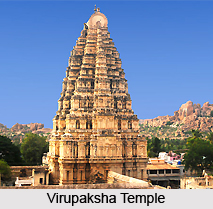 Primitive village gods, totemic symbol, blood sacrifice to appease ferocious deities, the tradition of exorcising ghosts, belief in deities which resided in trees, in streams and on hilltops describes the earlier stratum of Tamilian religious consciousness during the Sangam period. There are four or five kinds of deities mentioned by the Tolkappiyam as appropriate to different landscape, Kurinji, Mullai, Marudam and Palai -Murugan, Tirumal, Vendan (Indran) and Varunan respectively are another category of classification of popular deities.
Primitive village gods, totemic symbol, blood sacrifice to appease ferocious deities, the tradition of exorcising ghosts, belief in deities which resided in trees, in streams and on hilltops describes the earlier stratum of Tamilian religious consciousness during the Sangam period. There are four or five kinds of deities mentioned by the Tolkappiyam as appropriate to different landscape, Kurinji, Mullai, Marudam and Palai -Murugan, Tirumal, Vendan (Indran) and Varunan respectively are another category of classification of popular deities.
Worship of these gods depended upon the culture of the locality. A third and more sophisticated aspect of their religion was worship of gods and goddesses in temples. Fallen heroes, satis and other varieties of martyrs were called sacred and worshipped. Literature sang the praises of these deities. That was also the period during which many of the old deities assumed fresh characteristics and were equated with similar deities or gods, like Muruga - Subrahmanya, Siva-Rudra, Mayon-Vishnu, Kali-Parvathi and the Perunchadukkattu Bhudam-Ganesa identifications. Krishna of Mahabharata was fully deified while Rama was only in the stage of an admired hero.
Centres of religious importance like Tirupati, Madurai, Tiruchendur, Puhar, Vanji, Kanchi were few but significant. Hindus, Jains, Buddhists, primitive` totem worshippers etc., coexisted in that society without generating serious controversies. The Manimekalai gives an indication of the Hinayana, a system of Buddhist philosophy known to the scholars of that religion in Kanchi under the leadership of Aravana Adigal. The authors of the Naladiyar, a collection of four hundred remarkable verses, were Jains.



















